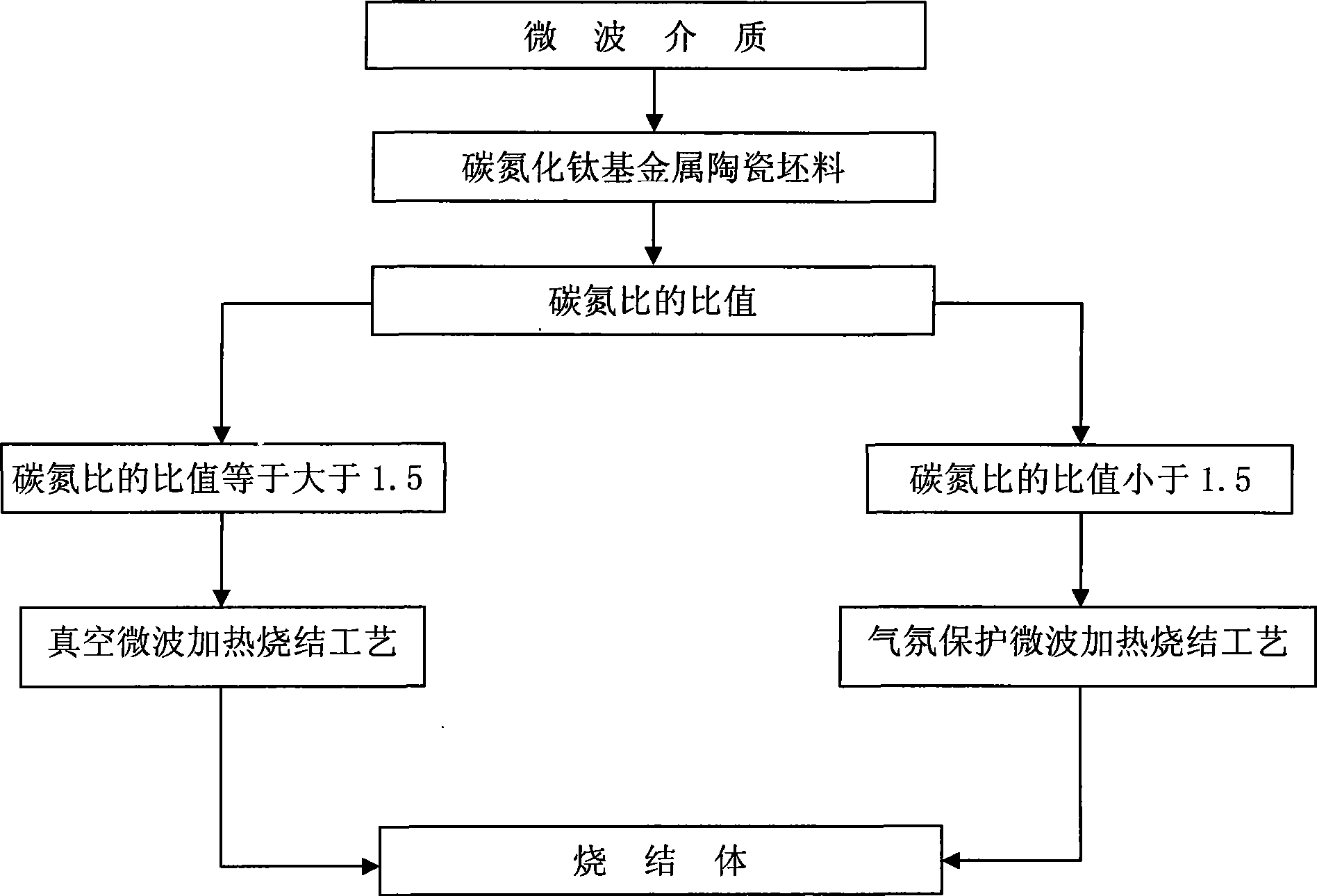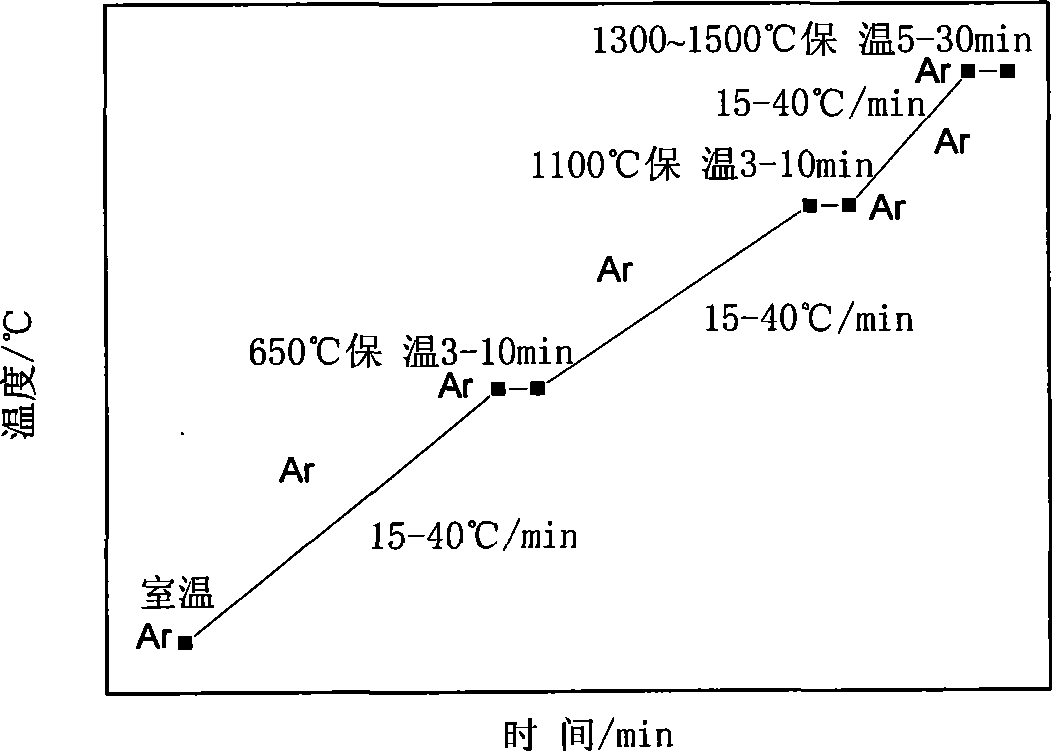Microwave sintering of superfine grain base titanium carbonitride
A technology of titanium carbonitride and ultra-fine grains, which is applied in the field of microwave sintering of ultra-fine grain titanium carbonitride-based cermets, which can solve the problems of coarse material grains, high energy consumption, long sintering and holding time, etc. , to achieve the effect of simple process, excellent performance, uniform and reliable heating
- Summary
- Abstract
- Description
- Claims
- Application Information
AI Technical Summary
Problems solved by technology
Method used
Image
Examples
Embodiment 1
[0032] Take a certain proportion of TiC 0.7 N 0.3 , WC, TaC, Co, Ni, Mo 2 C, ZrC, VC powder, according to the following mass ratio formulated into a mixture:
[0033] TiC 0.7 N 0.35 0.5wt% WC 15wt% TaC 10wt% Mo 2 C 8wt% Co 10w Mt% Ni 5wt% ZrC 1.0wt% VC 0.5wt%
[0034] The particle size of the powder of each of the above components is ≤1 μm.
[0035] Then the blank is made by powder metallurgy method, the process is:
[0036] (1) Wet grinding: Put the above mixed powder into the stainless steel ball mill tank of QM-1SP4 ball mill, add n-hexane at 200-400ml / l, select Φ5 hard alloy balls, the ball-to-material ratio is 5:1, and the speed is 200rpm , ball milling for 48 to 96 hours;
[0037] (2) Add molding agent: weigh paraffin wax by 3-5wt%, dissolve it in n-hexane, add ball mill tank and wet mill together with the mixture;
[0038] (3) Sieving: pass the ball milled slurry through a 60-mesh sieve, and settle for 1 to 2 hours;
[0039] (4) Drying: Put the precipitated mate...
Embodiment 2
[0050] Take a certain proportion of TiC 0.5 N 0.5 , WC, TaC, Co, Ni, Mo 2 C, ZrC, VC powder, according to the following mass ratio formulated into a mixture:
[0051] TiC 0.5 N 0.5 50.5wt% WC 15wt% TaC 10wt% Mo 2 C8 wt% Co 10wt% Ni5wt% ZrC 1.0wt% VC 0.5wt%.
[0052] The particle size of the powder of each of the above components is ≤1 μm.
[0053] Then the blank is made by powder metallurgy technology, the process is:
[0054] (1) Wet grinding: put the above mixed powder into the stainless steel ball milling tank of QM-1SP4 ball mill, add n-hexane at 350ml / l, select Φ5 hard alloy balls, the ball-to-material ratio is 5:1, and the speed is 200rpm. 96 hours.
[0055] (2) Adding forming agent: weigh paraffin wax according to 5wt%, dissolve it in n-hexane, add ball mill jar and wet mill together with the mixture.
[0056] (3) Screening: pass the milled slurry through a 60-mesh sieve, and settle for 2 hours.
[0057] (4) Drying: Put the precipitated material into a ZK-82...
PUM
 Login to View More
Login to View More Abstract
Description
Claims
Application Information
 Login to View More
Login to View More - R&D
- Intellectual Property
- Life Sciences
- Materials
- Tech Scout
- Unparalleled Data Quality
- Higher Quality Content
- 60% Fewer Hallucinations
Browse by: Latest US Patents, China's latest patents, Technical Efficacy Thesaurus, Application Domain, Technology Topic, Popular Technical Reports.
© 2025 PatSnap. All rights reserved.Legal|Privacy policy|Modern Slavery Act Transparency Statement|Sitemap|About US| Contact US: help@patsnap.com



